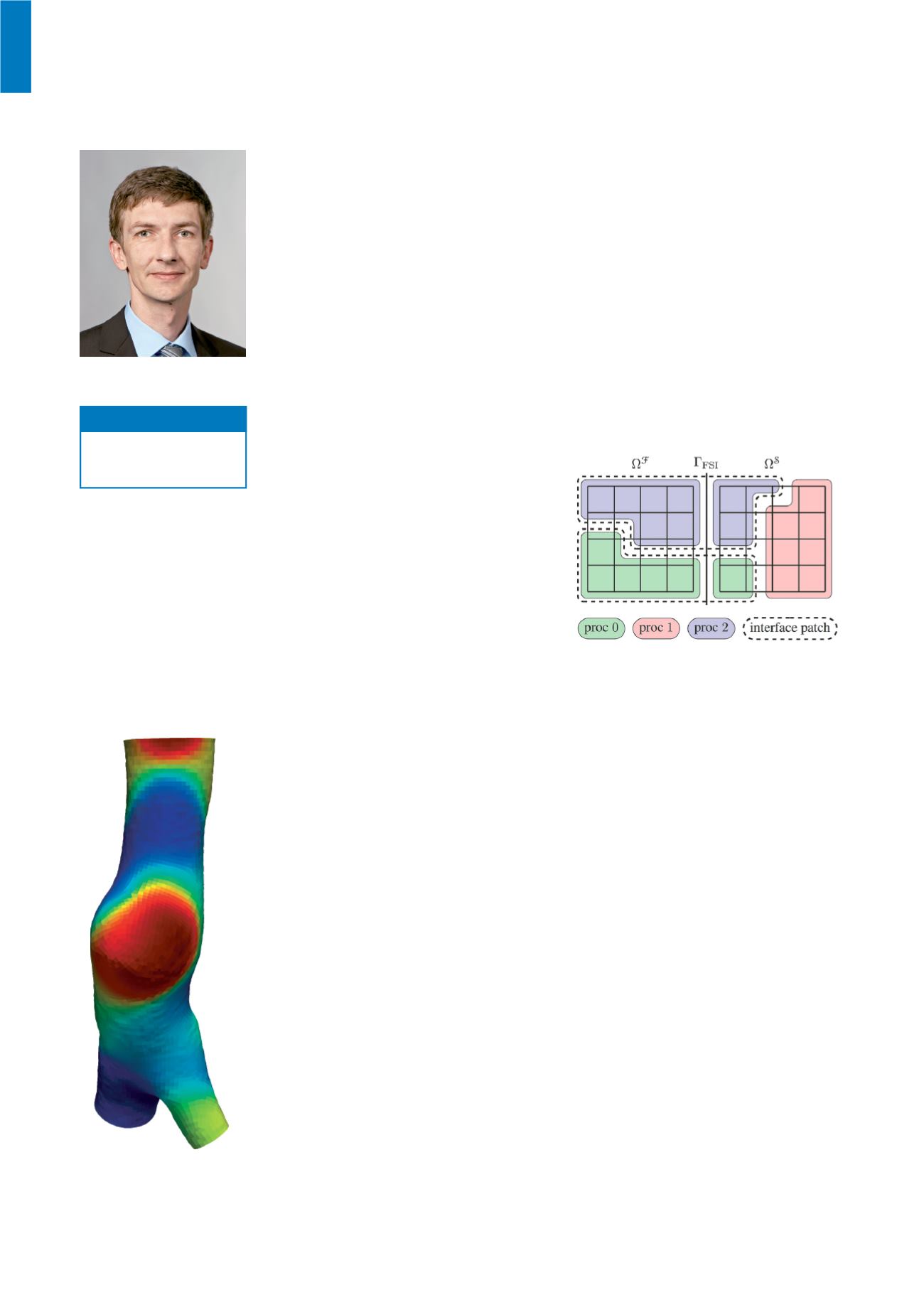

108
Mechanics & High Performance Computing
Mechanics and High Performance Computing
Parallel algorithms and high performance computing in computational continuum mechanics
Prof. Dr. Michael W. Gee
Hybrid Preconditioning for Surface-Coupled Problems
When solving coupled problems in a
monolithic fashion, powerful preconditi-
oning techniques are crucial to obtain an
efficient solution scheme. In our group,
we are interested in monolithic solvers for
fluid-structure interaction problems, where
a fluid and a solid domain exchange coup
ling information at their common coupling
surface. Starting from well-established
physics-based block preconditioners,
that are known to accumulate the error
at the coupling surface, we developed a
novel hybrid preconditioner. It is based on
an overlapping domain decomposition,
that purposely exhibits subdomains that
span across the fluid-structure interface.
By performing cheap, but accurate
subdomain solves in an Additive Schwarz
manner in combination with the existing
physics-based block preconditioners, the
number of iterations of the linear solver
as well as the total solution time could
be reduced remarkably. Furthermore,
scalability of the proposed methods has
been demonstrated.
n
Research activities of the Mechanics & High Performance Computing
Group in 2016 covered a range of topics in computational modeling
and algorithm development in the area of multifield phenomena, highly
efficient parallel solution methods, model reduction, inverse analysis and
uncertainty quantification. Applications focused on mechanical models
of the heart and the circulatory system, the mechanobiology of athero
sclerosis and abdominal aortic aneursyms and lately on the integration
and optimization of control algorithms with large-scale nonlinear com-
putational models.
www.mhpc.mw.tum.de sekretariat@mhpc.mw.tum.dePhone +49.89.289.10366
Contact
Parameter Identification and Predictive Simulation
Reliable use of parametric finite element
models in a predictive manner requires
knowledge of the statistical distribution
of model parameters. This knowledge
is often only available for a very broad
statistical universe restricting the predic-
tive capabilities of numerical models in a
personalized setup. The personalization
of distributions of model parameters is
therefore of high importance. In the area of
cardiovascular applications, such as e.g.
for the prediction of growth of abdominal
aortic aneurysms, the identification of
suitable personalized model parameters
can be carried out by means of data
assimilation techniques. Data is thereby
often encoded by medical images, e.g.
resulting from computed tomography
or magnetic resonance imaging. We
are focused on two key aspects in the
efficient and accurate identification of
patient specific parameter distributions.
This is the decoding and the mathematical
treatment of the information from image
data on the one hand, and the numerical
treatment of the possibly high parametric
dimension of the applied numerical model
on the other hand.
Overlapping domain decomposition for hybrid FSI
preconditioner
Abdominal aortic aneurysm with
maximum a posteriori solution of
a spatially distributed parameter
describing growth


















